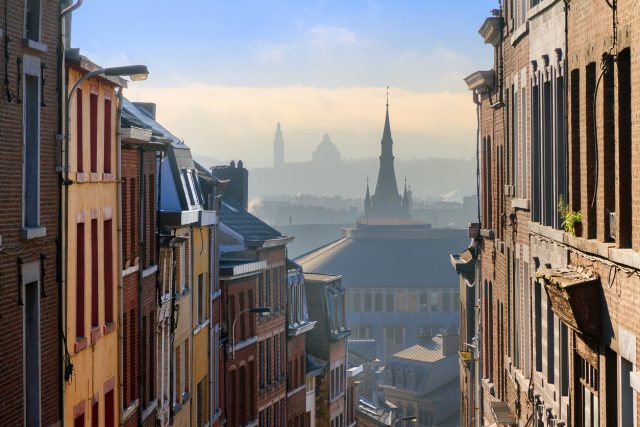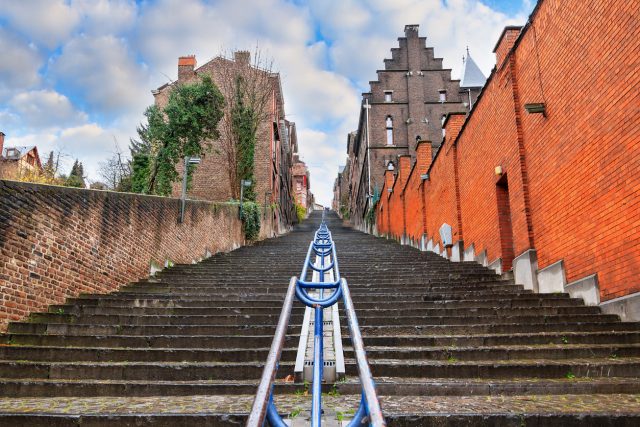 dennisvdw
dennisvdw
When it comes to this historic, culturally rich little country wedged between France, Germany, the Netherlands, and Luxembourg, the names that come to mind are of course capital Brussels, followed by Flemish (mostly Dutch-speaking) gems like Antwerp, Bruges, and Ghent. But slightly more than half of Belgium is covered by the French-speaking region in its south, called Wallonia, which tends to get shorter shrift among visitors. That’s a pity, because it, too, is packed with lovely mediaeval towns, Renaissance architecture, bucolic landscapes, gems of history/culture, and traditional Trappist beers. And a great place to start is its largest city (and third largest in Belgium, after Brussels and Antwerp), Liège!
With a dramatic setting astride the Meuse River in the steep-walled valley of the same name, this bustling metropolis of just under 200,000 has origins reaching back even before it was the Roman Empire outpost of Vicus Leudicus. Some Belgians and other Europeans have largely written Liège off because admittedly large parts of it are industrialised and unlovely (it became one of the top powerhouses of Europe’s 19th-century Industrial Revolution, and has continued to be Belgium’s industrial motor up to the present day). But there are plenty of gems to be discovered, as well, starting with landmarks of its pedestrian historic centre which date back to the Middle Ages.
 dennisdvw
dennisdvw
To get yourself orientated, do take a local walking tour and/or Meuse bâteau-mouche cruise. Otherwise, a great place to start is the Place du Marché, site of the elegant, early-18th-century city hall and monumental Perron Fountain (a symbol of Liège, dating to 1305), and the square alongside it, the Place St. Lambert, the heart of the city and home to the large Italianate-Renaissance Prince-Bishops’ Palace, built in the 16th century and now a courthouse (you can certainly have a nice look around the courtyard, though). One spot I find particularly cool is the Archéoforum under Place Saint Lambert, with excavated ruins dating back to prehistory and including Gallo-Roman walls and the lower levels of Romanesque and Gothic cathedrals. Otherwise, the city centre is just an interesting area to stroll, discovering its many stairways (above, some offering great views) and taking in a wide range of architecture including medieval, Renaissance, Victorian, Art Nouveau, and Modernist.
There are a handful of good museums, as well. Topping the list is the Grand Curtius, with four disparate collections in the former mansion-warehouse of a 16th-century Liège arms dealer. Yes, one of those collections is of arms and weapons, while the others cover 7,000 years worth of art and archaeology, as well as exhibits on Liège history and society through the ages. More Wallonia history and ethnography is the subject at the Musée de la Vie de Wallonie in a onetime Franciscan monastery, while Musée d’Ansembourg showcases decorative arts in an 18th century manse. and is devoted to the decorative arts and La Boverie concentrates on fine art from Wallonia and beyond.
 Saminaleo
Saminaleo
Lots of great eating here, as well. Local specialities include pungent Herve cheese, salade liégeoise (green beans, potatoes, and diced bacon); gaufres de Liège, special Belgian waffles, infused with caramel (above); pèkèt gin; boûkètes, dark crêpes with raisins and brown sugar; and café liégeois, made with coffee and coffee ice cream.
After sightseeing and dinner, if you want to check out the lively nightlife, look especially in the Place du Marché and Le Carré, the pedestrianised block behind the Opera House. Also, if you want to rub shoulders with the locals and are here on a Sunday, you can also check out the yummy foods on offer at the La Batte Market on the banks of the Meuse – Belgium’s largest and oldest.
There are lots of festivals here, too – the best known being Le 15 Août (yes, on 15 August) in the Outre-Meuse quarter over on the river’s east bank, a mix of Haussman-style boulevards and mediaeval backstreets and old courtyards, with a procession and a party atmosphere; the student-centred St. Nicholas Festival on 6 December; or perhaps most especially the Nuit des Coteaux on the first Saturday in October. Streets are lined with candles and there’s a plethora of live music and street performances; fireworks; and the chance to visit mediaeval buildings and alleyways normally closed to the public.
Finally, if you take the train into Liège you’ll also experience the spectacular Guillemins rail station, designed by one of Spain’s top starchitects, Santiago Calatrava, and opened in 2009.
More info in English: LiegeTourisme.be.

